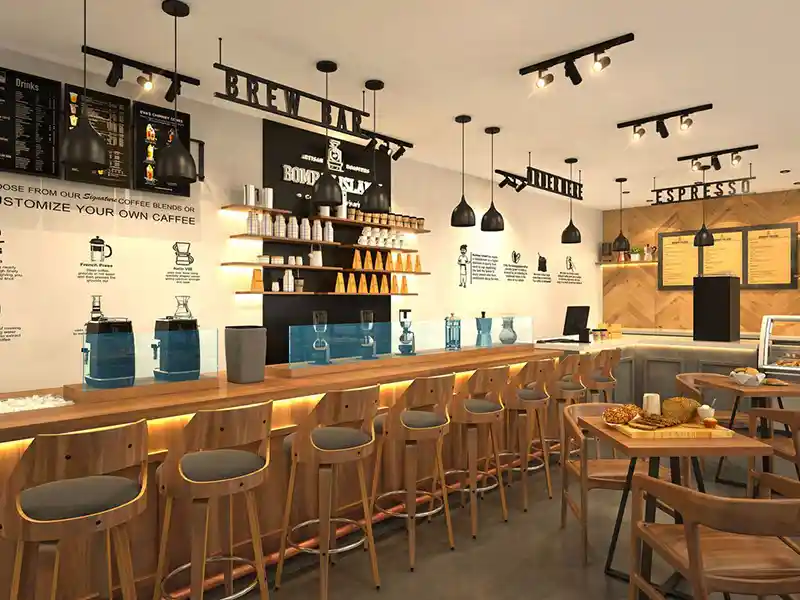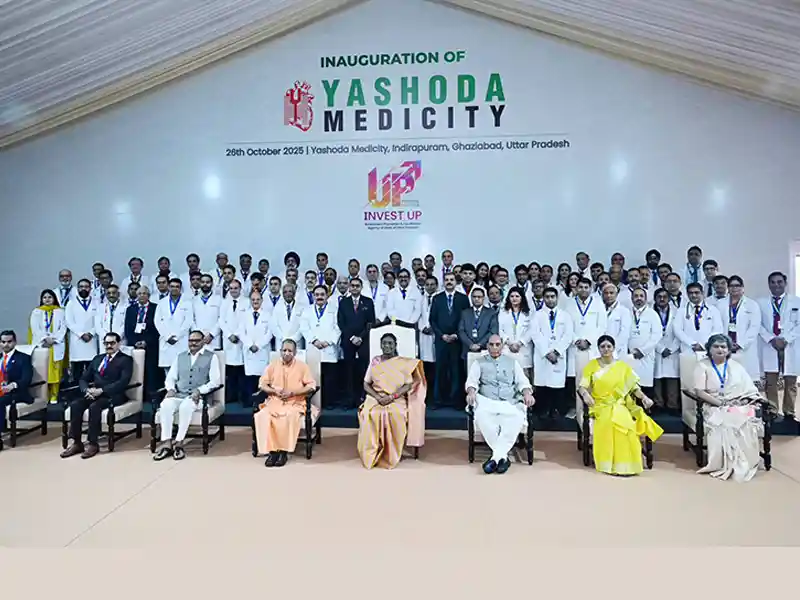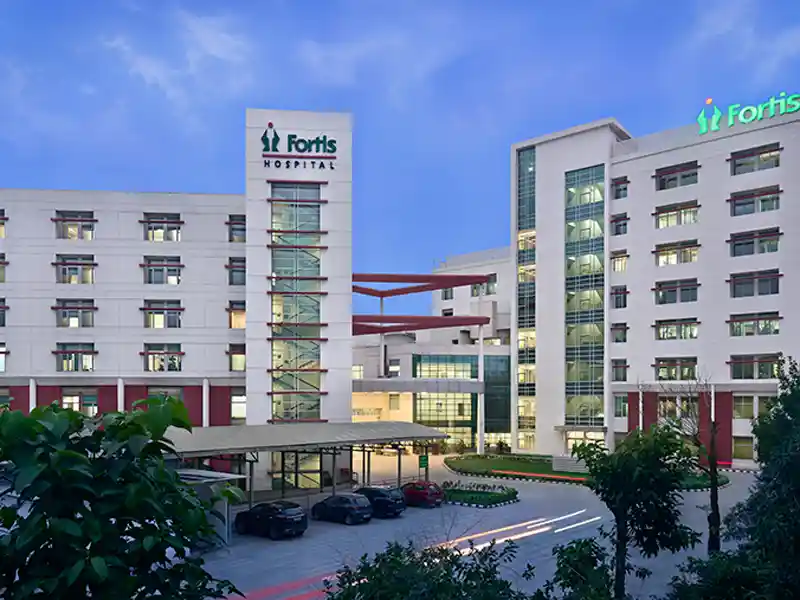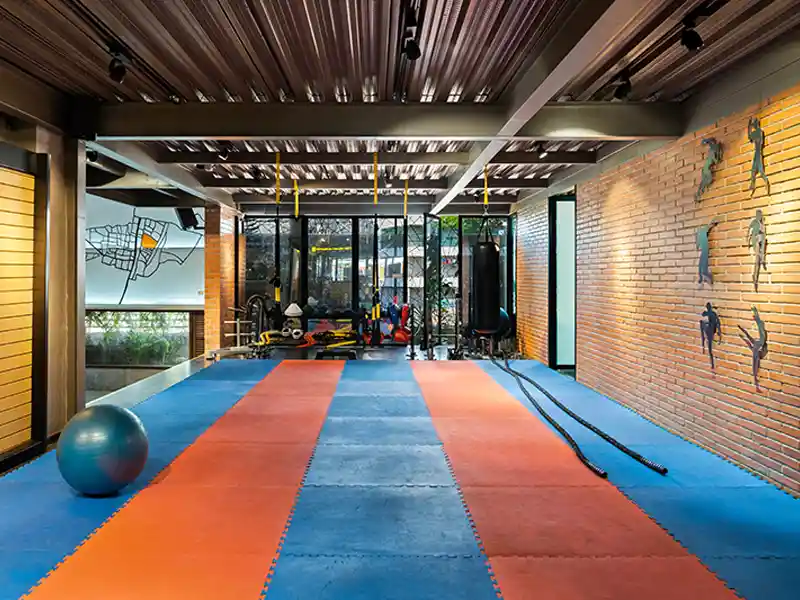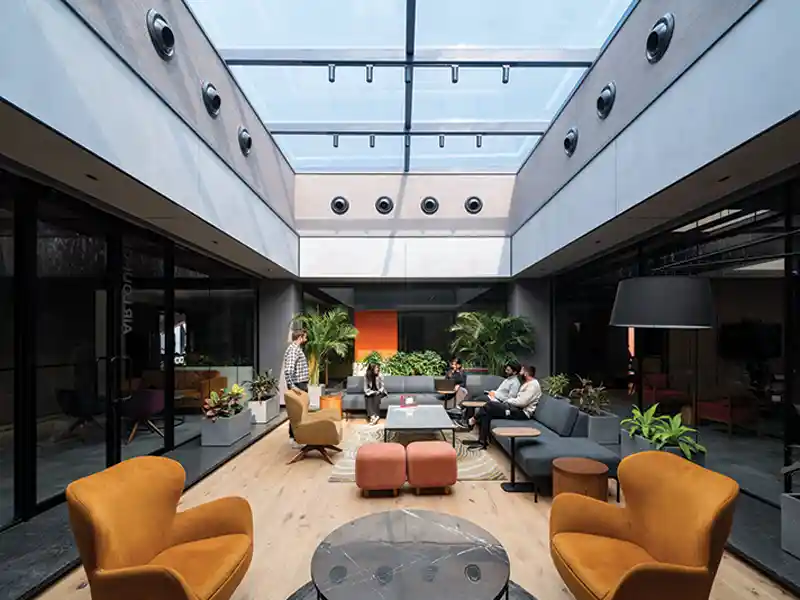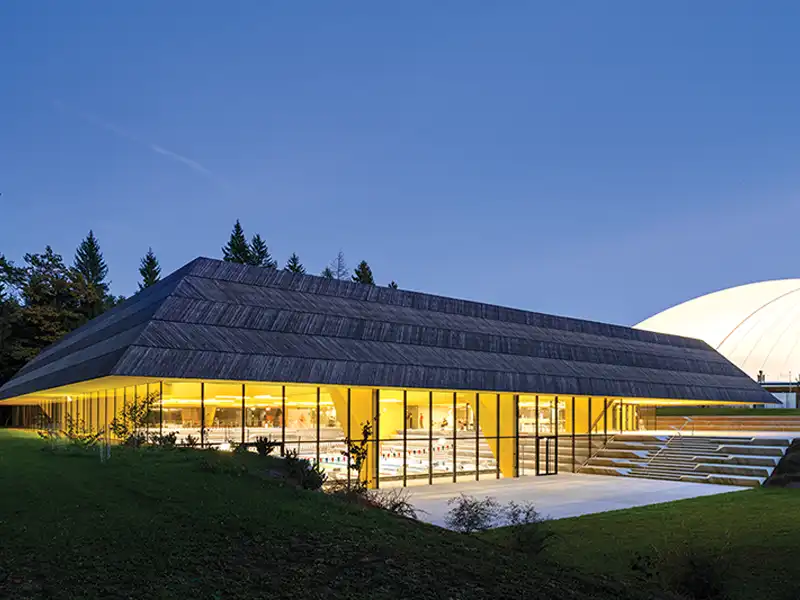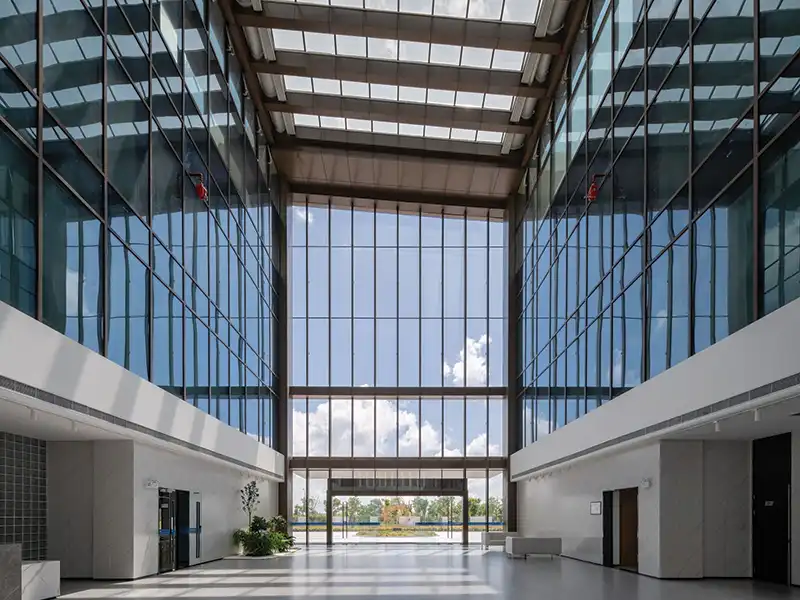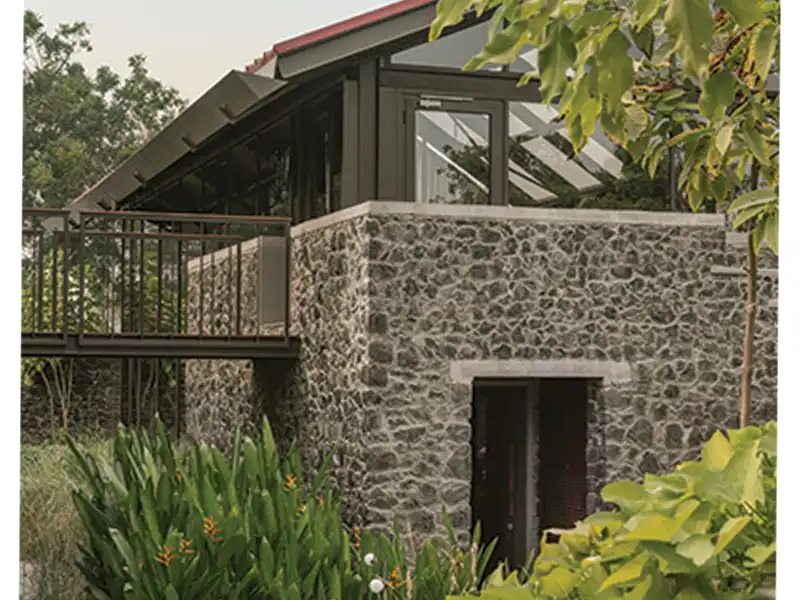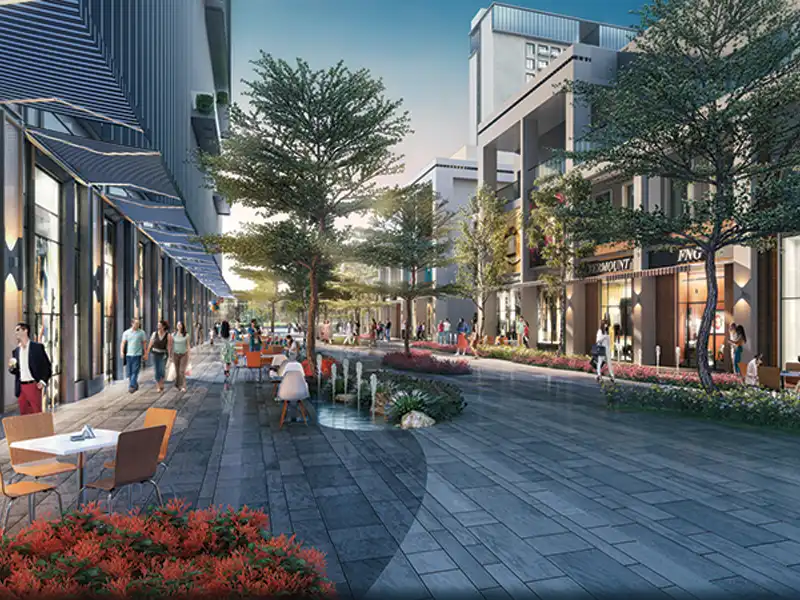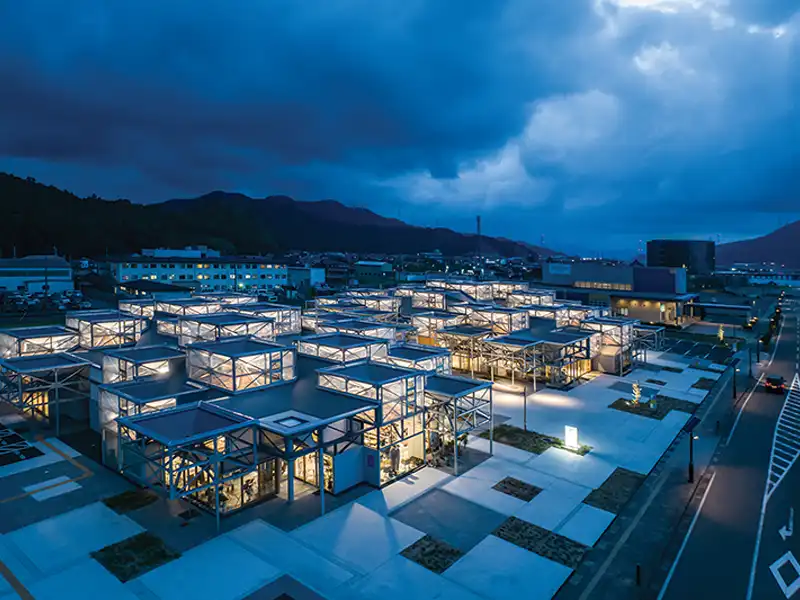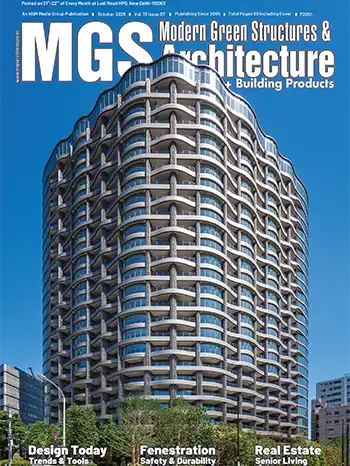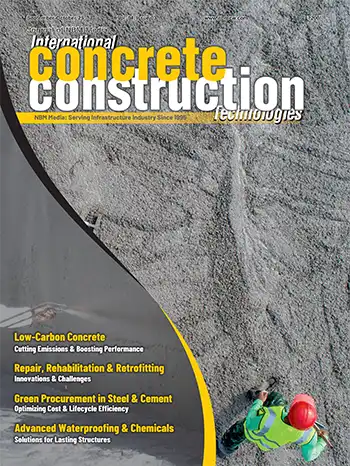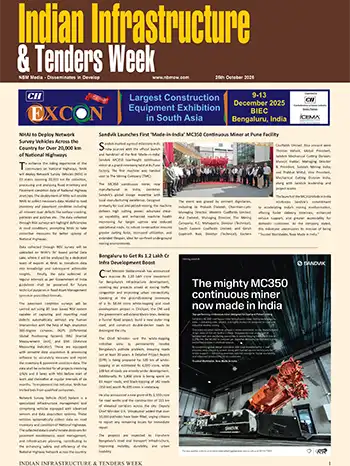
Fact File
Project Name: Zen SpacesLocation: Jaipur, Rajasthan, India
Gross Floor Area: 27,000 sqft
Lead Architect: Sanjay Puri
Associate Architects: Madhavi Belsare, Ishveen Bhasin
Design Team: Arjun Gupta, Vibha Alat
Photo credits: Dinesh Mehta
Source: v2com
Situated on a relatively large plot, with an existing house on the southern side, the new 4-level, 27,000 sqft house is built on the extreme northern end, with roads on three sides. All existing trees on the site were retained.

The house is a composition of cuboid volumes punctuated with an open courtyard, built on four levels to accommodate three generations. A subterranean level, lit naturally by a sunken courtyard, houses a large lounge, a gym, and service areas.
The circulation spine within the house skirts the courtyard, allowing a visual connection to the landscaped spaces. Diffused indirect sunlight permeates the inner volumes and every part of the house is naturally ventilated, with the courtyard contributing to passive cooling.

The house is punctuated with a winter deck on the southern side facing the large garden, and a linear summer deck fronting the main living and dining spaces on the northern end. The two decks provide sheltered outdoor seating. In addition, each room opens into its own private outdoor deck, balcony, or terrace.
To reduce heat gain in the summer months, and to simultaneously provide privacy and reduce noise from the arterial road, a series of GFRC screens sheath the east, west, and south sides, while the north side is more open. These screens allude to the stone screens of traditional architecture of Jaipur city.
The house has a simple RCC structure frame, with all walls made in fly ash bricks, and includes water recycling, rainwater harvesting, and a solar water heating system. Most of the materials used in the construction were locally procured.

The interior palette is predominantly neutral in shades of grey, with accents in the form of art and furniture. 80% of the furniture is custom made on site by local carpenters, and is constructed of Indowud, a rice husk ecofriendly wood substitute. Lime plaster is used on all the walls, reducing cement usage to a minimum.
In most areas of the house, the ceiling is left as exposed concrete. At night, the house lights up in parts, displaying its solid and perforated volumes in a sculptural way. The design of the house, with its courtyard, screens, indirect natural light, and complete natural ventilation, makes it extremely energy efficient.

